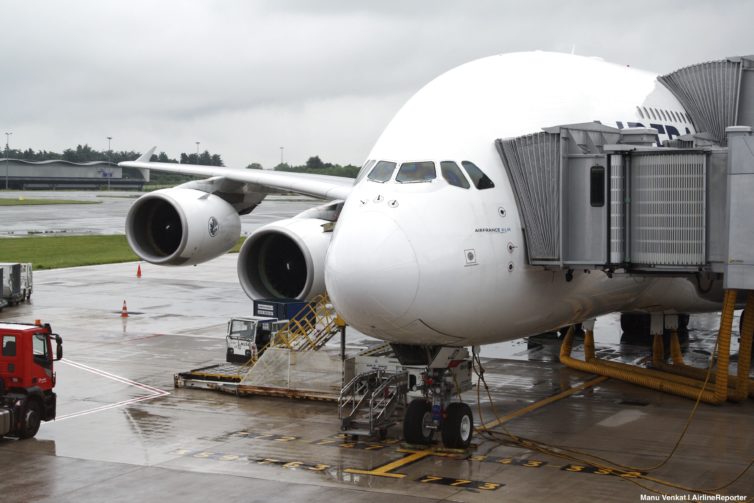
A little over ten years ago, Air France took delivery of its first Airbus A380 and flew its first commercial service from Paris to New York. Since then, the superjumbo has been the flagship of Air France’s fleet. But ten years is an eternity in the fast-moving airline world, and time takes its toll on hard-working airplanes. Air France originally announced plans to retire its A380 fleet by 2022, but with COVID capacity cuts, the airline just announced yesterday that the plane will be removed from service immediately. So whenever your last flight on an Air France A380 was — if you ever flew it — it was your last.
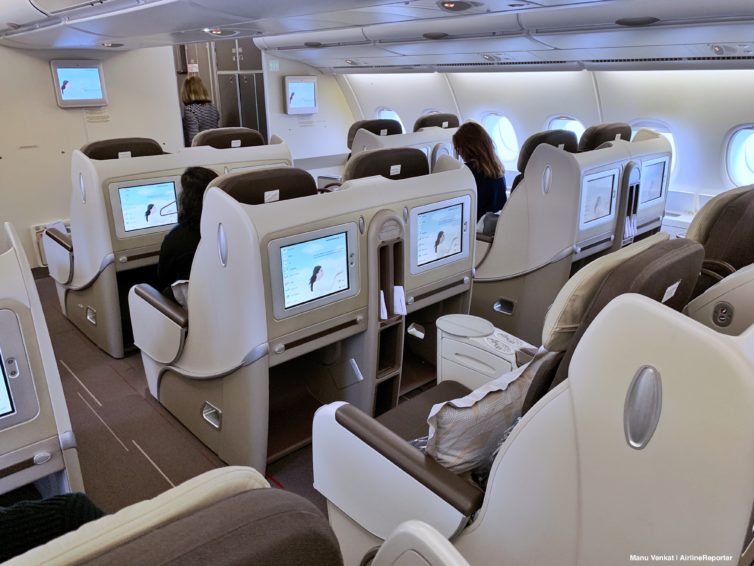
I had the chance to fly an Air France A380 last year on the same historic route that started its story with Air France: CDG to JFK. I’ve had some good times flying A380s in the past. My very first AirlineReporter story was a Lufthansa A380 trip report. And I got to fly a BA A380 in Club World a few years ago.
But by the time the flight was over, I could see why it was a plane that wasn’t going to be in the fleet for much longer. I did appreciate some things, like the super-smooth takeoff, whisper-quiet ride, and soaking in the spectacular scale of the double-decker. But the AF A380 is a plane that’s stuck in the past, and overall I won’t miss them much as they transition to their well-earned retirement. Whether you’re an A380 fan or a hater, read on for the full scoop.
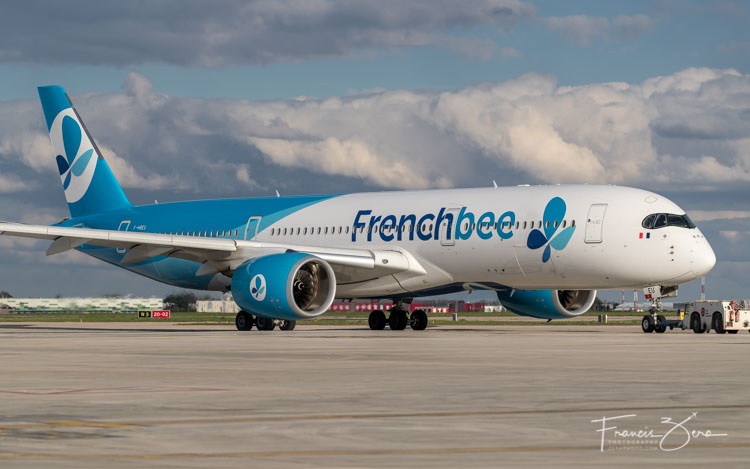
A French Bee A359 on the taxiway at Orly Airport in Paris. It’s a very lovely livery, IMHO.
Can you have low-cost airfare and elegant service? French Bee definitely wants you to think so.
French Bee is a relatively new low-cost carrier, having begun operations in September of 2016. They’re based at Paris Orly Airport (ORY).
With a current fleet of three Airbus aircraft (one A330-300 and two A350-900s) flying to five destinations, they’re a relatively small player, and they’re France’s first LCC. They also have one A350-1000 on order, currently slated for delivery later this year.
From their ORY hub, they fly to San Francisco, Punta Cana in the Dominican Republic, Papeete, Tahiti, and Saint Denis, Reunion, all of which are vacation destinations for French travelers.
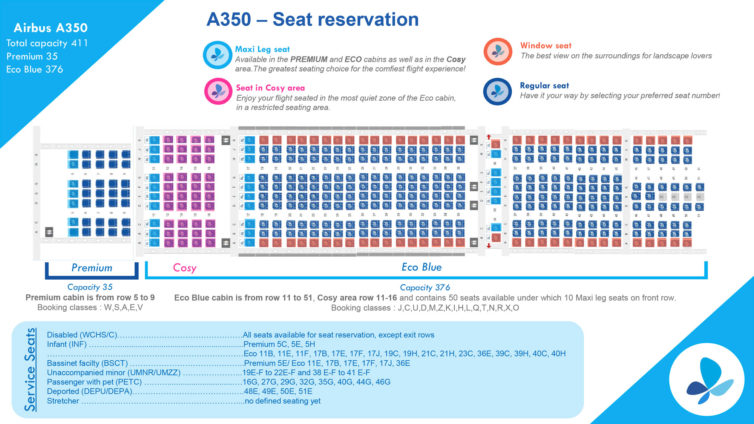
French Bee’s A350-900 seat map
French Bee is part of the Dubreuil group, which also owns Air Caraîbes, a somewhat larger airline which primarily serves Caribbean holiday destinations from the same ORY base.
Interestingly, French Bee started out being named French Blue. When the airline applied for a U.S. air carrier permit in November 2017, JetBlue objected to the idea of allowing another airline to operate in the United States that had the word “blue” in its name. That eventually led to a rebrand as French Bee in January 2018.
With a target audience of budget-minded holidaymakers, the airline’s pricing is very competitive; fares typically run less than $700 return between SFO and ORY. An additional $250-ish buys you a premium-class seat (more on that later).
There are 411 seats on a French Bee A359: 35 Premium, 50 Cosy, and 326 in Eco Blue.
I flew with French Bee on their SFO-ORY-SFO route the first week of April, traveling in 10-abreast Smart Economy/Eco Blue on the outbound leg and in their Premium cabin on the return flight.
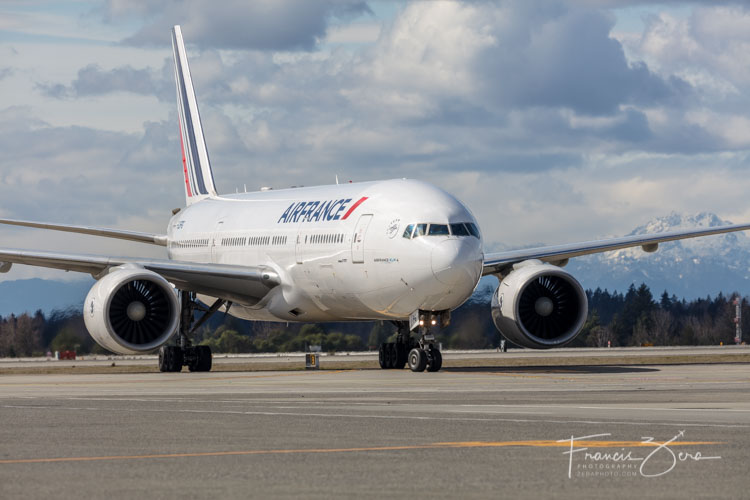
Air France flight 338 arrives at Sea-Tac Airport March 25
Following an absence of over six years, Air France is once again flying to the U.S. Pacific Northwest, using a Boeing 777-200ER with a three-class cabin for flights from Paris-Charles De Gaulle (CDG) to Seattle-Tacoma International Airport (SEA) on an initial schedule of three flights per week. Seattle is Air France’s 12th U.S. gateway.
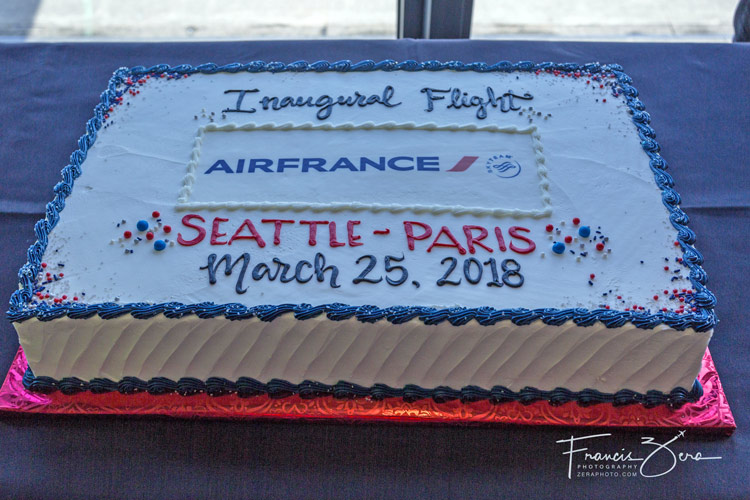
Of course there was cake
The new SEA-CDG service will operate on Wednesdays, Fridays, and Sundays, increasing to five per week during the summer peak season (June 19 ’“ Sept. 1) by adding Mondays and Tuesdays to the schedule.
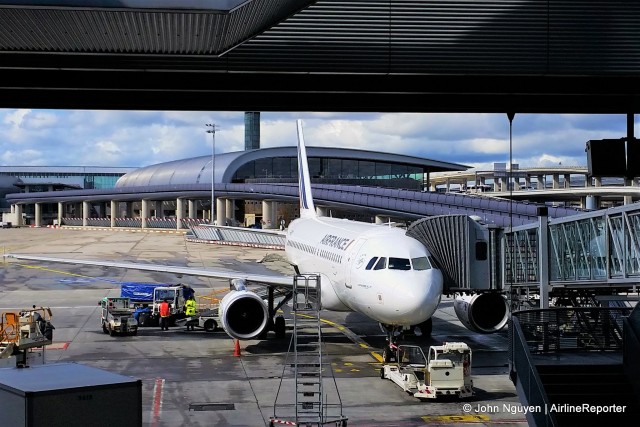
Our Air France A319, parked at Gate L21 at CDG
We had purchased a Premium Economy fare to fly from San Francisco to Istanbul (IST) via Paris-Charles de Gaulle (CDG) with a 60-minute layover. While I was looking forward to checking out Air France’s medium-haul Premium Economy service from CDG-IST, the carrier quietly eliminated the class on everything but long-haul flights and placed passengers into regular Economy. Not nice.
Fast-forward to our landing at CDG — our inbound flight on the A380 was delayed taking off from SFO and spent its time circling the airport grounds, finally docking 45 minutes before our next flight. Would we make it in time, or would we have to spend four hours waiting for the next flight and losing an entire evening in Istanbul?






